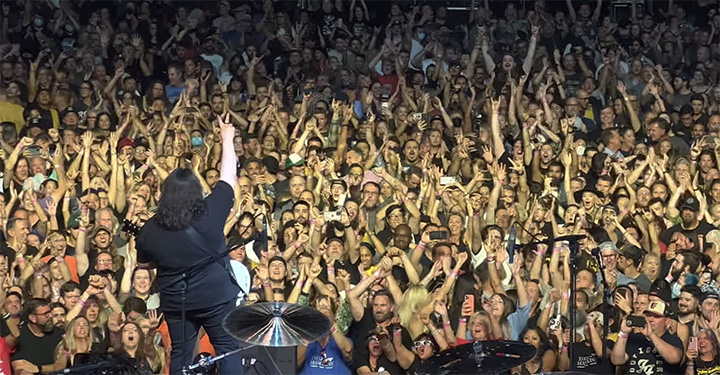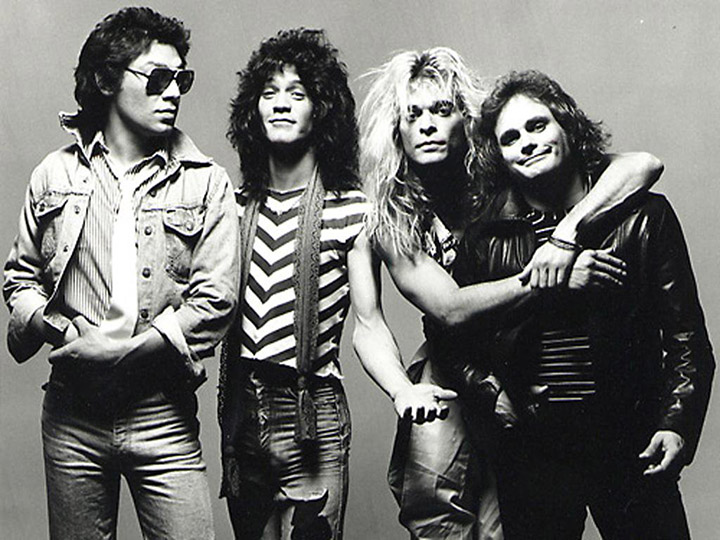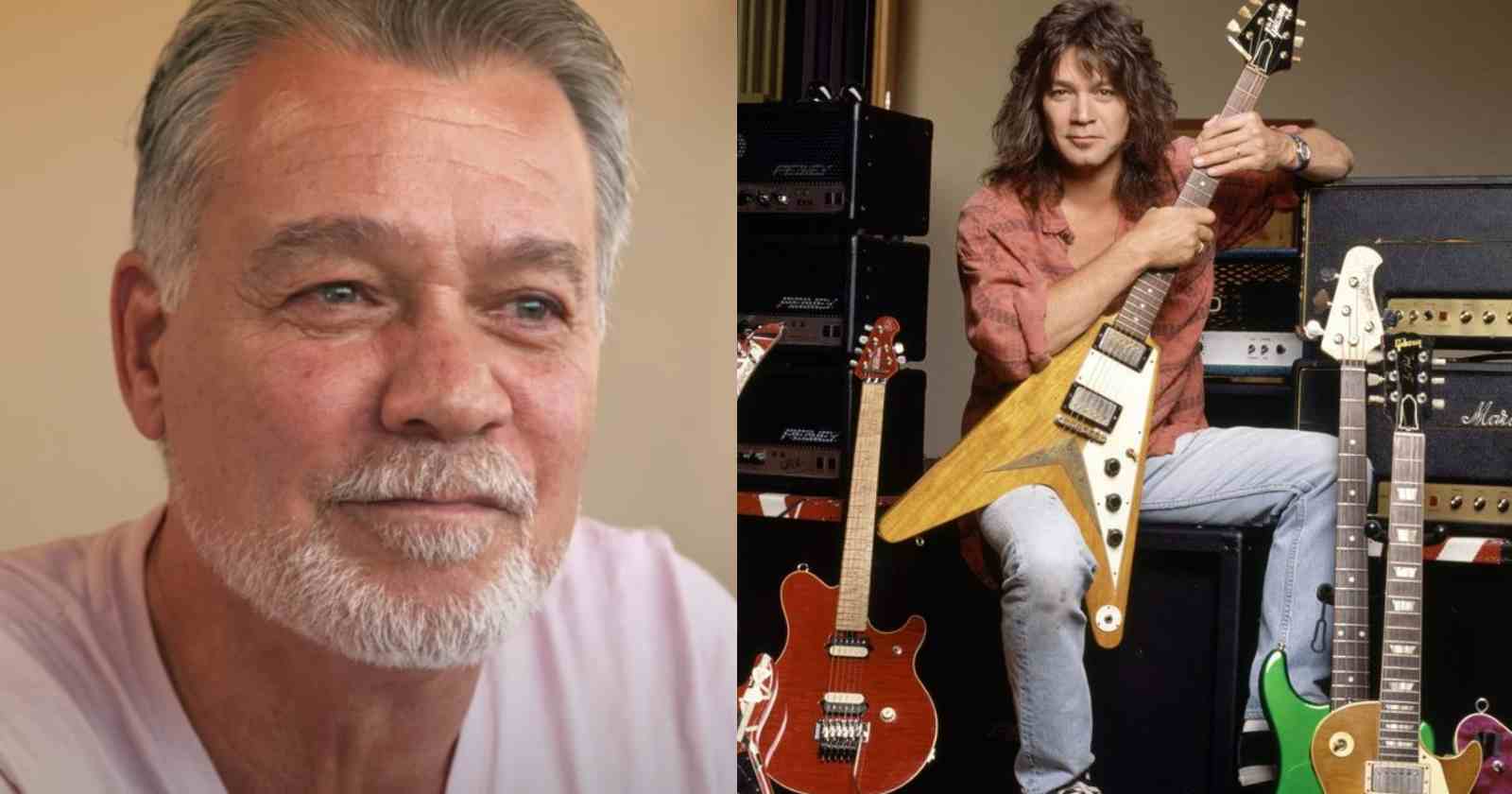Van Halen

Van Halen, a name synonymous with rock and roll, has left an indelible mark on the musical landscape. Their electrifying performances, Eddie Van Halen’s groundbreaking guitar techniques, and a blend of hard rock and pop sensibilities propelled them to the forefront of the music industry. This exploration delves into the band’s formation, influences, musical evolution, and enduring legacy.
Formation and Early Influences
Van Halen’s genesis can be traced back to Pasadena, California, where brothers Eddie and Alex Van Halen formed a band with David Lee Roth and Michael Anthony in 1972. The band’s early influences were diverse, encompassing hard rock giants like Led Zeppelin and Deep Purple, blues masters like Jimi Hendrix and Eric Clapton, and even the pop-infused rock of the Beatles. This eclectic mix of influences would ultimately shape Van Halen’s unique sound.
The Breakthrough of “Van Halen”
Their self-titled debut album, released in 1978, marked their breakthrough. Tracks like “Runnin’ with the Devil,” “Eruption,” and “Ain’t Talkin’ ‘Bout Love” showcased Eddie Van Halen’s extraordinary guitar virtuosity, David Lee Roth’s charismatic vocals, and the band’s raw energy. The album achieved commercial success, reaching platinum status and solidifying their place in the rock scene.
Eddie Van Halen’s Guitar Virtuosity
Eddie Van Halen’s impact on the rock genre cannot be overstated. His innovative techniques, including two-handed tapping, harmonics, and dive bombs, redefined the possibilities of the electric guitar. He transformed the instrument into a vehicle for melodic expression, technical prowess, and sheer sonic power. His signature sound, characterized by a blend of blues, rock, and classical influences, inspired countless guitarists worldwide.
Musical Evolution and Eras
Van Halen’s musical journey spanned over three decades, during which they experimented with different sounds and styles. Their early albums, from “Van Halen” to “1984,” were defined by their hard rock roots, featuring high-octane riffs, powerful vocals, and Eddie Van Halen’s iconic guitar solos.
“We wanted to play loud, we wanted to be heavy, we wanted to be rock and roll.” – Eddie Van Halen
The band’s sound evolved in the late 1980s and early 1990s, incorporating more pop elements and synthesizers into their music. This shift was evident in albums like “5150” and “For Unlawful Carnal Knowledge,” which featured hits like “Jump” and “Right Now.”
Legendary Live Performances
Van Halen’s live shows were legendary for their high energy, Eddie Van Halen’s spectacular guitar solos, and David Lee Roth’s flamboyant stage presence. The band’s performances were known for their improvisation, raw power, and infectious enthusiasm.
“We’re not afraid to take chances. We’re not afraid to experiment.” – David Lee Roth
Their concerts were a spectacle of musical virtuosity and visual theatrics, cementing their reputation as one of the greatest live acts of all time.
The Van Halen Brothers

The Van Halen brothers, Eddie and Alex, were the musical backbone of the iconic rock band Van Halen. Their unique talents and dynamic interplay on stage helped define the band’s sound and propelled them to legendary status.
The Relationship Between David Lee Roth and Eddie Van Halen
The relationship between David Lee Roth and Eddie Van Halen was a complex one, marked by both creative synergy and personal clashes. On stage, Roth’s flamboyant personality and energetic stage presence complemented Van Halen’s virtuoso guitar playing. Their contrasting personalities, however, often led to friction off stage. Roth’s desire for solo success and his increasingly erratic behavior ultimately led to his departure from the band in 1985.
David Lee Roth’s Impact on Van Halen’s Success
David Lee Roth’s charismatic stage presence and unique vocal style were instrumental in Van Halen’s early success. Roth’s high-energy performances, combined with his playful and often outrageous lyrics, helped create a distinct image for the band. His vocals, characterized by their powerful range and distinctive delivery, became synonymous with the Van Halen sound.
Comparing David Lee Roth and Sammy Hagar
Sammy Hagar replaced David Lee Roth as the lead singer of Van Halen in 1985. While both singers brought their unique talents to the band, their musical styles and personalities differed significantly. Roth’s music was characterized by its energetic and often comedic approach, while Hagar’s music leaned towards a more blues-rock style.
Eddie Van Halen’s Guitar Playing
Eddie Van Halen’s guitar playing revolutionized rock music. His innovative techniques, such as two-handed tapping, dive bombs, and harmonic squeals, pushed the boundaries of what was possible on the electric guitar. Van Halen’s signature sound was defined by his distinctive tone, his mastery of improvisation, and his ability to seamlessly blend rock, blues, and classical influences.
Van Halen’s Cultural Influence

Van Halen, a band renowned for their electrifying performances, innovative guitar work, and hard-rocking anthems, has left an indelible mark on music and popular culture. Their influence extends far beyond their commercial success, shaping the sound of rock music and inspiring generations of musicians.
Van Halen’s Musical Legacy: A Timeline
Van Halen’s musical journey is marked by a series of groundbreaking albums, singles, and tours that defined their era and continue to resonate today. This timeline highlights some of their most significant milestones:
- 1978: Van Halen, their self-titled debut album, is released, introducing the world to Eddie Van Halen’s innovative guitar techniques and David Lee Roth’s charismatic stage presence. The album features the hit single “Runnin’ with the Devil,” a track that quickly became a rock anthem.
- 1979: Women and Children First, their second album, further solidifies their status as a major force in hard rock. The album’s lead single, “Dance the Night Away,” becomes a popular radio hit.
- 1980: Fair Warning, their third album, showcases their growing musical maturity and features the iconic track “Jump,” which introduces synthesizers into their sound and becomes one of their signature songs.
- 1984: 1984, their fifth album, marks a significant turning point in their career. The album’s lead single, “Jump,” becomes a global sensation, topping the Billboard Hot 100 chart and solidifying Van Halen’s status as a mainstream act. The album also features other popular hits like “Panama” and “Hot for Teacher.”
- 1986: 5150, their sixth album, sees the departure of David Lee Roth and the arrival of Sammy Hagar as the new lead singer. The album features the hit single “Why Can’t This Be Love,” a power ballad that showcases Hagar’s vocal range and becomes one of their most popular songs.
- 1991: For Unlawful Carnal Knowledge, their eighth album, marks a return to their hard rock roots and features the hit singles “Right Now” and “Poundcake.”
- 1995: Balance, their tenth album, sees the return of David Lee Roth as the lead singer. The album features the popular single “Can’t Stop This Feeling.”
- 2004: Best of Both Worlds, a compilation album featuring songs from both the David Lee Roth and Sammy Hagar eras, is released.
Van Halen’s Influence on Subsequent Generations of Musicians
Van Halen’s innovative guitar work, powerful vocals, and energetic stage presence have inspired countless musicians across various genres.
- Guitarists: Eddie Van Halen’s groundbreaking techniques, including his signature tapping and dive-bombing, have influenced a generation of guitarists, including Joe Satriani, Steve Vai, and Yngwie Malmsteen.
- Vocalists: David Lee Roth’s charismatic stage presence and unique vocal style have inspired numerous singers, including Axl Rose, Bret Michaels, and Sebastian Bach.
- Bands: The band’s influence can be seen in the sound and style of numerous bands, including Guns N’ Roses, Bon Jovi, and Def Leppard.
Van Halen’s Impact on Popular Culture
Van Halen’s music and image have permeated popular culture, appearing in movies, TV shows, and video games.
- Movies: Their music has been featured in numerous films, including Bill & Ted’s Excellent Adventure, Wayne’s World, and Top Gun.
- TV Shows: Their songs have been used in popular TV shows like Friends, South Park, and The Simpsons.
- Video Games: Their music has been featured in video games like Guitar Hero and Rock Band.
Van Halen’s Awards, Accolades, and Achievements
Van Halen’s contributions to music have been recognized with numerous awards, accolades, and achievements.
| Award | Year |
|---|---|
| Grammy Award for Best Hard Rock Performance | 1985, 1986, 1992 |
| American Music Award for Favorite Heavy Metal/Hard Rock Artist | 1984, 1985, 1986, 1987 |
| MTV Video Music Award for Best Stage Presence | 1984 |
| Inducted into the Rock and Roll Hall of Fame | 2007 |
Van Halen, known for their electrifying live performances and Eddie Van Halen’s groundbreaking guitar work, are a band that has left an indelible mark on rock history. Their music, a potent blend of hard rock and heavy metal, often explores themes of rebellion and self-expression.
One particularly fascinating aspect of their music is the use of humor, as seen in their iconic song “Jump,” which references the classic phrase “shakes the clown.” To delve deeper into the cultural and linguistic significance of this phrase, check out this article: shakes the clown.
This exploration provides valuable insight into the nuances of Van Halen’s lyrics and their impact on popular culture.
Van Halen, the legendary rock band, has a rich history filled with electrifying performances and iconic songs. One of the most pivotal figures in their journey was the charismatic frontman, David Lee Roth , whose energetic stage presence and unique vocal style became synonymous with the band’s sound.
Roth’s departure in 1985 marked a significant change for Van Halen, but his influence on their legacy remains undeniable.
